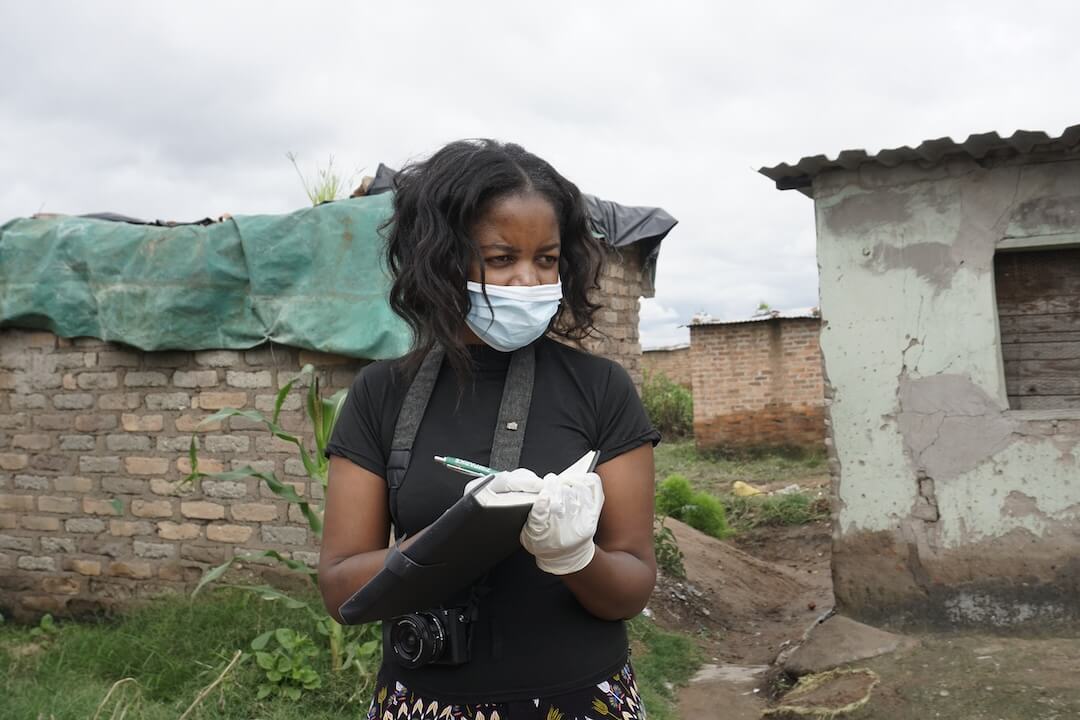How do you take reporting and writing about race relations up a level? It requires a strong focus on the fundamental tools of good journalism, along with an investigator’s resolve to work through this subject’s unique obstacles. Some tips:
As You Report…
Sharpen Your Skills. . . Your ability to talk across race is tied as much to reporting and telling an excellent story as it is to selling your story to an editor. Examine your fears and look for ways — through reading, writing, talking — to move beyond them. The more comfortable you are in asking difficult questions about race relations, the more complete your reporting will be.
Look for the Unfamiliar Frame . . . The story of race relations has, at its roots, a handful of universal elements. There’s oppression, supremacy, inferiority, conflict, fear, ignorance, love, unity, redemption, hatred, pain, confusion, etc. A lot of journalists frame stories by only one of those elements. Newspapers and broadcast stations are drawn to stories that pit one race against the other (or, the flip-side, the “We Are the World” story in which everyone loves everyone else). Reporters often round up the usual suspects, who occupy one end of the saints-or-sinners extreme or the other, missing the messy middle, where wrenching truths can be found. Journalists will get deeper, more interesting stories if they suspect the usual round up: find a broader range of voices; employ more of those universal elements to tell what is surely going to be a complex story.
Decode the Interview . . . People often will speak in euphemisms or use otherwise obtuse and inference-laden language when talking about race relations. Ask the simple, yet powerful question: “What do you mean?” Ask it until your audience can understand the answer. Decode the language. When you accept less, the story does not reach its greatest potential for explaining and educating.
Put Race Where it Belongs . . . Ask yourself some important questions as you report the story: Is the whole story about race relations? Is race at least half of what makes this a story? Does it belong in the lead? The summary paragraph? A sentence in the middle? A small afterthought at the end? Strong, purposeful reporting can answer those questions. Don’t rely too much on the first thing sources say.
In early 1998, former University of Florida president John Lombardi was threatened with losing his job when it came out that he’d called the system chancellor an “Oreo.” Lombardi is white, the chancellor is black. The insult, for many, is akin to being called an “Uncle Tom,” though there was some hint that Lombardi meant something quite different. There was little if any reporting on the meaning of the word, which might have helped readers understand more about race relations.
Much of the media coverage of Lombardi’s ensuing media trials connected his near-demise exclusively to the dinner-party remark. Newspapers like the St. Petersburg Times, however, eventually explored the political undercurrent, where some of Lombardi’s old enemies were exploiting the racial controversy to topple an otherwise invulnerable foe. Placed into its proper perspective, then, a racial slur became but one of several major threats to Lombardi’s job.
When you write…
Use Telling Details . . . Avoid clichés and other well-worn phrases when writing about race relations. Rather than saying that the “gathering was the picture of racial harmony,” provide details that demonstrate “harmony.” Find fresh ways to characterize the “great divide” aka the “cultural chasm.” Facing the tricky topic of race relations, reporters sometimes forget the adage, “show, don’t tell.”
Speak in the Active Voice . . . It seems almost human nature for journalists and their sources to favor the passive voice when speaking about things racial; particularly when talking about injustice. Thus, the white woman “was vilified” or the Vietnamese child “was discriminated against.” The active voice places the action where it belongs: with the actor. The epitome of this passive practice is accepting the explanation that someone was victimized because of their race, e.g. “She was demoted because she was Hispanic.” How does the meaning of the sentence change when the actor is given the action and we say, “She was demoted because her boss disliked Hispanics”?
Say what you mean . . . Clarity is critical in reporting on race relations. Ambiguity breeds distrust and a loss of credibility. If you mean white people, don’t say “blue collar.” If you mean it’s a Latino neighborhood, don’t say “inner city.” If you mean Hmong, don’t say “minority.” A 1997 Wall Street Journal article about the decline in the number of black people in the military falls into the trap of using terms connoting race and geography as synonyms.
“But the biggest surprise today is just how slim the pickings are when the Army tries to find fresh recruits, especially in the worst-off parts of inner cities, which the military seems close to abandoning altogether. This is a tender subject for the military. The Army is “definitely not” giving up on the inner city, says Maj. Michael McGurk, a recruiting official who emphasizes that more than 20 percent of Army recruits in 1996 were black.”
— Covering Race Relations, p.3
Provide Context . . . Remember that one of the key questions in basic journalism is “Why?” Without context, the question often goes unanswered. Context helps the audience understand why people respond to one another as they do. It helps them understand problems better so they can make better decisions about how to solve them. Sometimes it demonstrates that the problem was really about race. Sometimes it shows that it wasn’t. Each is an important contribution to your audience’s understanding.
When Lou Rom was a reporter for the Lafayette (La.) Daily Advertiser, he wrote a story about a neighborhood of black people who accused the local public works agency of dragging out drainage construction in their neighborhood and putting their children at unnecessary risk. They intimated that things would be different in a wealthier (read: white) neighborhood. Rom first went out and compared work sites and discovered that there was little evidence to back up the complaint.
But he also asked the people why they were willing to believe that the government was racist. With those two pieces of context in the story, he was able to explain a problem, explain some of its history, and provide everybody with fair answers. A follow-up story reported that neighbors felt better about the work being done.
Identify People With Care . . . Question the need for all racial identification. Be sure it is clear to your audience why some people are identified by race. Don’t ask the reader to read your mind. In descriptions, recognize that most racial identifiers tell you little about how the person actually looks. With purpose or context, racial identifiers can perpetuate an age-old practice of treating people who are not white as “others.”
A 1998 Orange County Register story reported on a scam run by two men who posed as doctors and “treated” people until someone died. From the story:
“Police believe Moreno worked at the First Street clinic for at least a year, with his partner Rafael Garay. The clinic primarily served Hispanic families.”
Go Beyond Black & White . . . Read that literally and figuratively. Literally: Race relations involves reporting on how people interact with one another, among and between the races. It includes black people, white people, Latinos of all races, Asians and Native Americans — everyone who claims a race.
Figuratively: Move beyond the polarized debate that characterizes much of the discourse on race relations. Explore the gray, where a great many people reside. Avoid the neat-and-tidy stories that seek to resolve racial conflict in 15 inches or 90 seconds.
In 1995, New York Times reporter N.R. Kleinfield was among many reporters who wrote about the fatal fire at Freddy’s clothing store, set by a black man intent on punishing a white landlord for trying to evict a black tenant. Kleinfield’s story provides lyrical evidence of the value of context:
“Given that Mr. Harari is white and Jewish and Mr. Shange and the attacker are black, it would be easy to
reduce these events to a simple morality tale reeking of one of the uglier and most enduring stereotypes of prejudice.
“But the volatile ingredients that flowed together inside Freddy’s appear to be nowhere that straightforward. Another party central to the dispute was a predominantly black Pentecostal church that owned the building and had been aggressively striving to maximize the return on its land holdings. And there were protesters who undoubtedly held mixed goals….
“No one knows now if race was ever at the root of this long-running dispute or if it was the allure of money or even just two people who didn’t much like each other. But as is often the case in issues of life and death in New York, a mix of factors may have transformed it into something other than it was. Before it was over, the predicament of one record shop had come to represent for some people the entire anguished history and enduring scars of the street that has been Harlem’s soul.”





